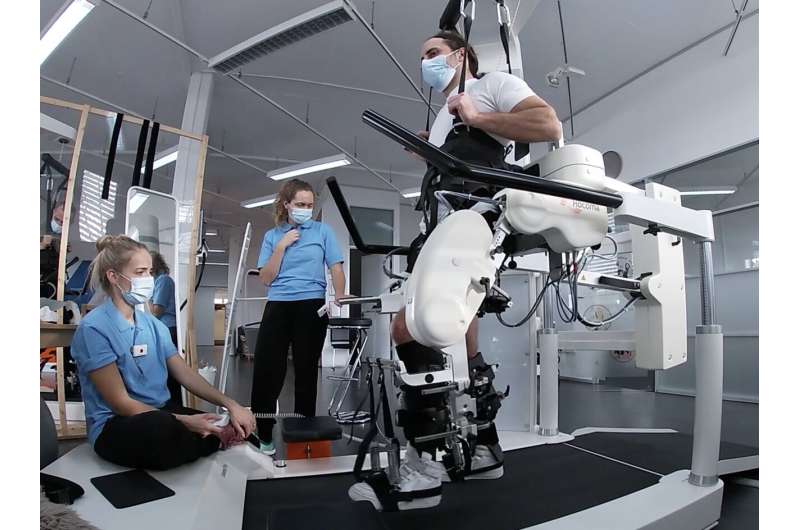A team at .NeuroRestore, led by Grégoire Courtine and Jocelyne Bloch, has now developed a system that seamlessly integrates an implanted spinal cord neuroprosthesis with rehabilitation robotics. The researchers’ device delivers well-timed electrical pulses to stimulate muscles in harmony with robotic movements, resulting in natural and coordinated muscle activity during therapy.
The work is published in the journal Science Robotics.
The neuroprosthetics innovation leveraged the robotic expertise of Professor Auke Ijspeert’s lab at EPFL. This advancement not only enhances immediate mobility but also fosters long-term recovery.
“The seamless integration of spinal cord stimulation with rehabilitation or recreational robotics will accelerate the deployment of this therapy into the standard of care and the community of people with spinal cord injury,” says Courtine. This adaptability ensures that rehabilitation professionals can incorporate this technology into existing rehabilitation protocols worldwide.

